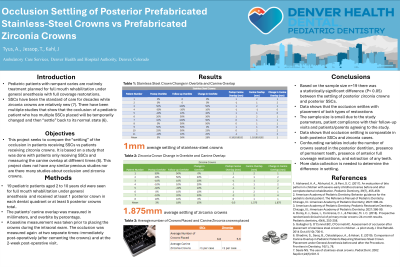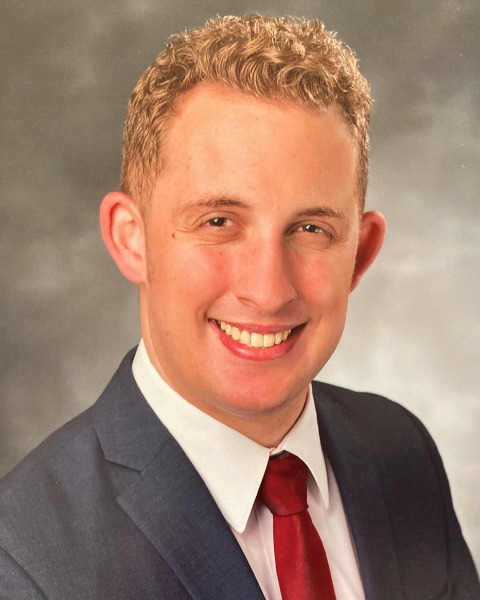Restorative
369 - Occlusion Settling of Posterior Prefabricated Stainless-Steel Crowns vs Zirconia Crowns


Andrew Tyus, DDS
Resident
Denver Health Department of Pediatric Dentistry
University of Colorado School of Dental Medicine
Denver, Colorado, United States- JK
Jeffrey Kahl, DDS
Program Director
Denver Health Medical Center
Denver, Colorado, United States
Presenting Author(s)
Program Director(s)
Purpose: To measure the occlusion settling of posterior prefabricated stainless-steel crowns (SSCs) vs prefabricated zirconia crowns in pediatric full mouth dental rehabilitation patients.
Methods: Pediatric patients aged 2 to 10 years old seen for full mouth rehabilitation under general anesthesia receiving at least 1 posterior crown in each dental quadrant or at least 5 posterior crowns total. To determine settling, we measured the patients’ overbite by percentage and canine overlap in millimeters. Measurement was taken prior to placing the crowns, right after the case was finished, and at the 2-week post-operative visit. As a baseline/control, the overjet was measured, and a posterior open bite was noted if present.
Results: Of 25 patients who participated, 19 were present for their follow-up visit. Eleven SSC patients and 8 zirconia patients were compared by their changed in overbite and canine overlap. From the raw data we saw that 91% of SSC patients had settling, with 73% having a change in canine overlap from postop to follow-up. Zirconia patients had 100% settling, with 100% having a change in canine overlap from postop to follow-up.
Conclusions: Statistical analysis is in-process. The sample size is small due to the study parameters and patient compliance Raw data shows that occlusion settling is comparable in both posterior SSCs and zirconia cases. Confounding variables include the number of crowns seated in the posterior dentition, presence of permanent teeth, presence of anterior full coverage restorations, and extractions. More data collection is needed to determine the difference in settling.
Identify Supporting Agency and Grant Number:

.jpg)